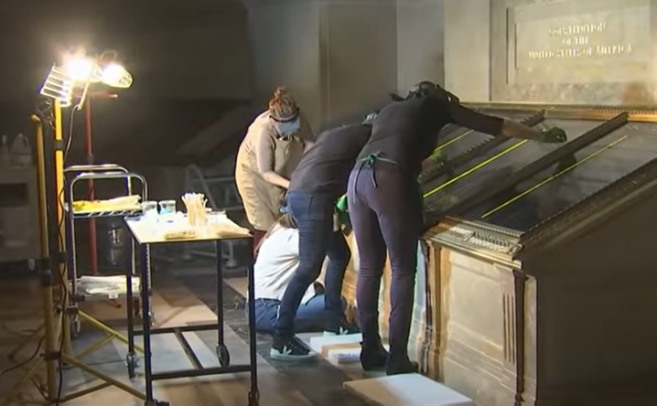In February, two climate change activists made headlines for vandalizing the Capitol Rotunda by throwing red powder onto a display case housing the United States Constitution. This act of protest resulted in significant damage, estimated to be over $50,000, and necessitated several days of cleanup. Soon after, both individuals were arrested and faced felony charges for their actions, which culminated in sentencing that included actual prison time. This incident sparked a broader discussion about the efficacy and implications of extreme protest tactics in the climate change movement.
One of the activists, Donald Zepeda, was sentenced to two years in federal prison for his role in the vandalism, while his co-defendant, Jackson Green, received an 18-month sentence. U.S. District Judge Amy Berman Jackson presided over the hearings and explicitly expressed her disapproval of the protest’s methodology. She told Zepeda that his actions did not further the cause he claimed to advocate for and instead questioned the link between his protest and climate change. This reaction from the judiciary reflects a growing concern over destructive forms of activism and their potential repercussions.
Zepeda, who is associated with the climate change awareness group Declare Emergency, pleaded guilty to the destruction of federal property. The defense argued that he did not intend to cause damage to the Constitution or its case, suggesting instead that his motivation was to prompt the Biden administration to declare a climate emergency. However, the court’s ruling underscored that such means of protest are counterproductive, as they can alienate potential allies and disrupt constructive dialogue surrounding climate issues.
Green, in his sentencing remarks, offered an apology and acknowledged the negative impact of their actions. He noted that violent or destructive protests can have an unintended effect, which is often to turn public sentiment against the very causes they seek to promote. His reflection indicates a growing awareness among activists about the long-term consequences of their protest strategies and the importance of fostering positive engagement for advocacy work. Such realizations could serve to recalibrate the approach of climate activists moving forward, steering them away from tactics that lead to backlash.
The idea that punitive measures for vandalism might deter similar future acts is an additional perspective highlighted in the aftermath of this incident. Some commentators believe that if harsh penalties are consistently applied, they may encourage activists to reconsider the implications of their methods. This sentiment extends to recent trends of vandalism against famous artworks using food items, prompting a broader discourse about the balance between civil disobedience and respect for cultural institutions.
Overall, the incidents involving Zepeda and Green serve as critical case studies in the ongoing debate about the effectiveness of protest methodologies within the climate change movement. While the intention behind raising awareness for environmental issues is commendable, the methods employed can often lead to harmful results, alienating the very audience advocates hope to engage. As activists contemplate their strategies, these events highlight the necessity for approaches that inspire collaboration and constructive dialogue in pursuit of climate action.

